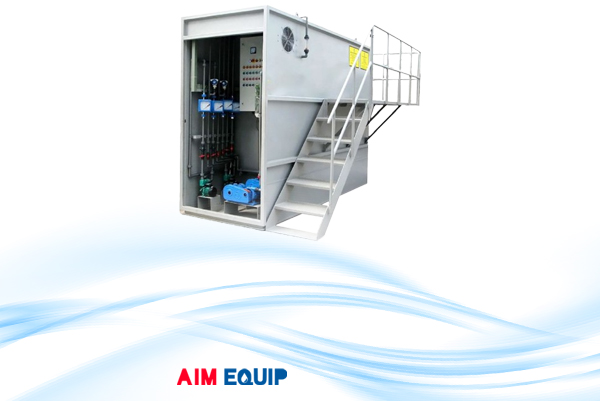Description
MBR (membrane bioreactor) treatment plant is a wastewater treatment system that combines a membrane filtration process with a suspended growth bioreactor.
The MBR treatment plant consists of two main processes: the biological treatment process and the membrane filtration process. In the biological treatment process, microorganisms consume and biodegrade organic pollutants and nutrients in the wastewater. This process typically takes place in an aerated tank or basin, where the microorganisms are kept in suspension through mechanical agitation or aeration.
The second process, membrane filtration, involves the use of a membrane filter to separate the treated water from the microorganisms and solids in the bioreactor. The membrane filter typically used in MBR treatment plants is a microfiltration membrane, which has pore sizes of 0.1 to 0.4 microns. The membrane filter allows for high-quality treated water that can be reused for non-potable applications, such as irrigation or industrial processes.
MBR treatment plant Advantages
High-Efficiency Filtration
MBR combines biological treatment with membrane filtration, ensuring superior removal of suspended solids and microorganisms, resulting in high-quality treated water.
Reduced Footprint
MBR systems typically require less space compared to conventional wastewater treatment methods, making them suitable for applications with limited space availability.
Improved Water Quality
The membrane barrier in MBR systems provides a more effective barrier against pathogens and contaminants, leading to improved water quality and meeting stringent discharge standards.
Flexibility and Scalability
MBR technology is adaptable to various wastewater treatment needs and can be easily scaled up or down based on the volume of wastewater to be treated, offering operational flexibility.
Reduced Sludge Production
MBR systems produce less sludge compared to conventional wastewater treatment processes, contributing to easier handling and disposal of the residual byproducts.
Consistent Treatment Performance
MBR technology maintains consistent treatment performance even during fluctuating influent conditions, ensuring stable and reliable wastewater treatment.
Potential for Water Reuse
The high-quality effluent produced by MBR systems makes it suitable for water reuse applications, contributing to sustainability and resource conservation.
Lower Chemical Usage
MBR treatment plants often require fewer chemicals for coagulation and flocculation, leading to reduced chemical costs and minimizing the environmental impact of chemical usage.
Reduced Energy Consumption
While MBR systems may require energy for membrane aeration and pumping, the overall energy consumption can be offset by the reduced sludge production and improved treatment efficiency.
Longer Sludge Age
MBR systems allow for a longer sludge age, promoting enhanced biological nutrient removal and reducing the need for additional treatment processes.

MBR treatment plant Features
● High removal efficiency for bacteria and viruses
● Flexible design, suitable for various capacities and types of wastewater
● Easy operation and maintenance, with remote monitoring, available
● Low noise and odour, suitable for urban areas
● Environmentally friendly, with low energy consumption and carbon footprint








Reviews
There are no reviews yet.